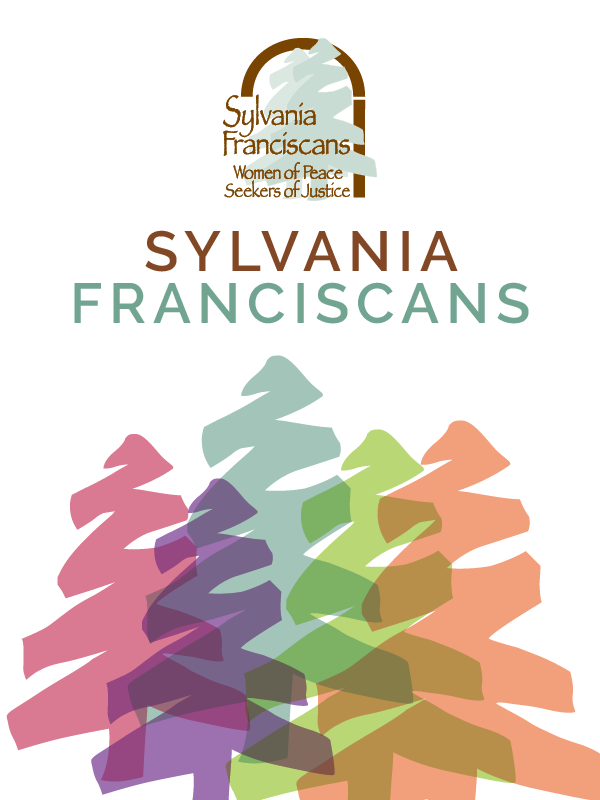
Sister Patricia Taube, OSF
July 28, 2025
Sister M. Ricarda Witt, OSF
August 25, 2025by Sara Grunberg
August 4
Nature is persistent. You can see it in the dandelions breaking through sidewalk seams, moss creeping along forgotten concrete walls, or the tree roots lifting up the corners of old city curbs. Even in places dominated by asphalt and steel, nature refuses to disappear—it adapts, squeezes in, and finds ways to survive.
These are all signs of life pushing back. What if we stopped treating these green intrusions as out of place, and instead embraced them as a guide? Imagine if cities weren’t built in opposition to nature, but in partnership with it—where rooftops became gardens, overpasses became parks, and storm drains were flanked by rain-absorbing native plants. What if urban spaces were designed to grow, not just expand?
Urban greening is one solution to welcoming nature back into urban settings. It’s a philosophy of design that intentionally integrates vegetation into the fabric of city infrastructure. Urban greening reimagines the built environment as something that can coexist with, and even support, nature.
It goes far beyond potted plants on balconies or decorative landscaping. It encompasses green roofs that insulate buildings while reducing energy costs, tree-lined streets that capture carbon and cool entire neighborhoods, rain gardens that absorb stormwater runoff and prevent urban flooding, and living walls on buildings to filter air pollutants and insulate interiors.
The benefits are wide-reaching. Urban greenery improves air quality, reduces urban heat islands, mitigates flooding through better stormwater absorption, and promotes mental well-being. It even boosts biodiversity, creating mini-habitats for birds, bees, and other wildlife in the heart of dense neighborhoods. Parks and green corridors also improve physical and mental health, offering places for exercise, community connection, and moments of quiet relief in otherwise noisy, fast-paced environments.
An innovative example of blending nature with infrastructure is the wildlife overpass over the Trans-Canada Highway in Banff National Park in Alberta, Canada. Camouflaged with trees, rocks, and native plants, it invites grizzlies, elk, wolves, and even tiny pine martens to safely cross one of Canada’s busiest roads. Part of a network of over 40 wildlife crossings in the park, this overpass has helped reduce wildlife-vehicle collisions by more than 80%. As part of the Yellowstone to Yukon corridor, it reconnects wild spaces and ensures that ancient migration paths remain open in a modern world.
Urban greening doesn’t mean giving up space—it means rethinking how we use it. As cities continue to grow, they don’t have to become concrete jungles. Urban greening offers us an opportunity to turn our cities into ecosystems where people and nature can thrive together. Whether it’s turning rooftops into gardens or converting overpasses into parks, these changes show that cities don’t have to be separate from nature. With a little creativity and investment, they can become living, breathing ecosystems—where people and plants thrive side by side.
Sara Grunberg
 In the role of Sustainability Coordinator for Lourdes University and the Sylvania Franciscans, Sara Grunberg works as the common link between all campus ministries in achieving a sustainable campus. Sara was raised in the Franciscan tradition as a student at Sylvania Franciscan Academy, later graduating from Notre Dame Academy. At the University of Dayton, she earned a B.S. in Environmental biology, worked on a student-run farm, and learned beekeeping. From there, she attended the College of Charleston for a master’s degree in environmental and sustainability studies.
In the role of Sustainability Coordinator for Lourdes University and the Sylvania Franciscans, Sara Grunberg works as the common link between all campus ministries in achieving a sustainable campus. Sara was raised in the Franciscan tradition as a student at Sylvania Franciscan Academy, later graduating from Notre Dame Academy. At the University of Dayton, she earned a B.S. in Environmental biology, worked on a student-run farm, and learned beekeeping. From there, she attended the College of Charleston for a master’s degree in environmental and sustainability studies.







